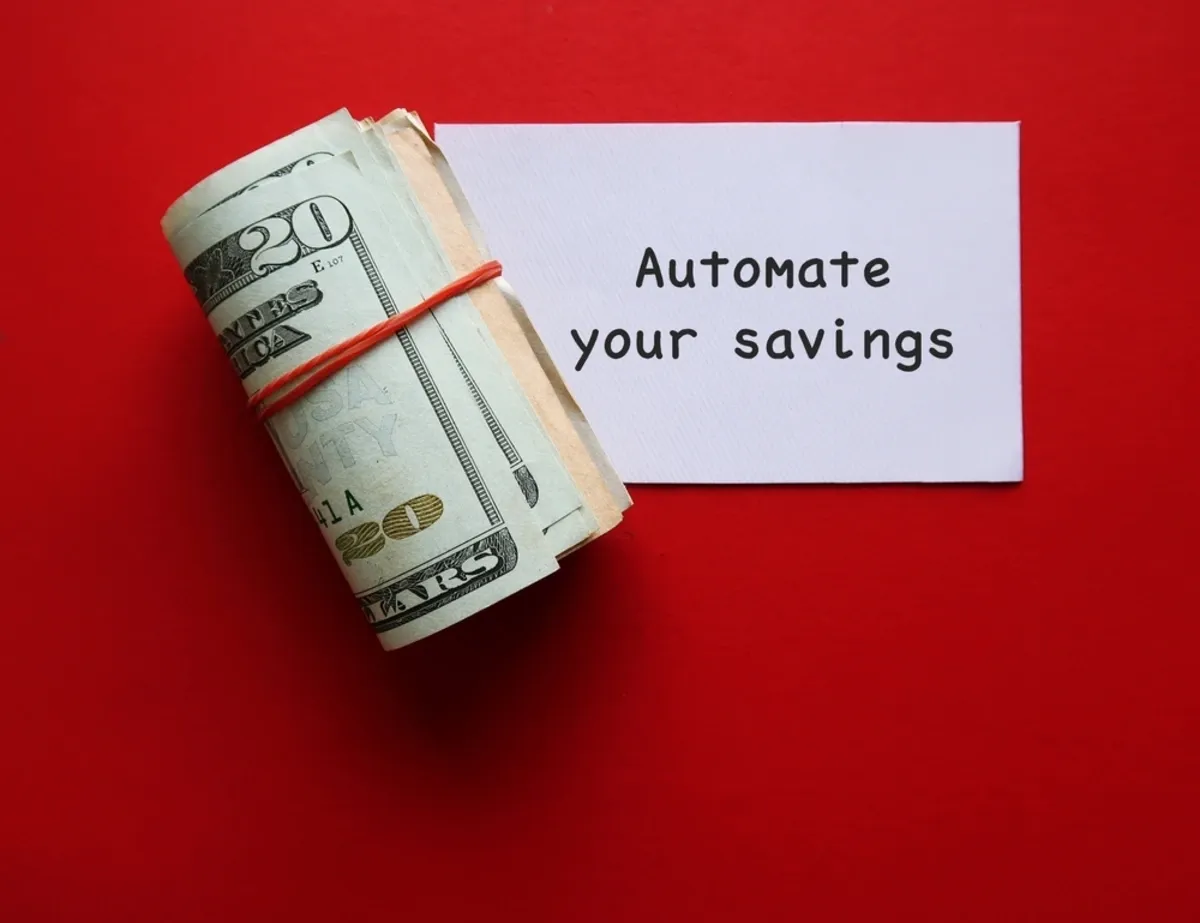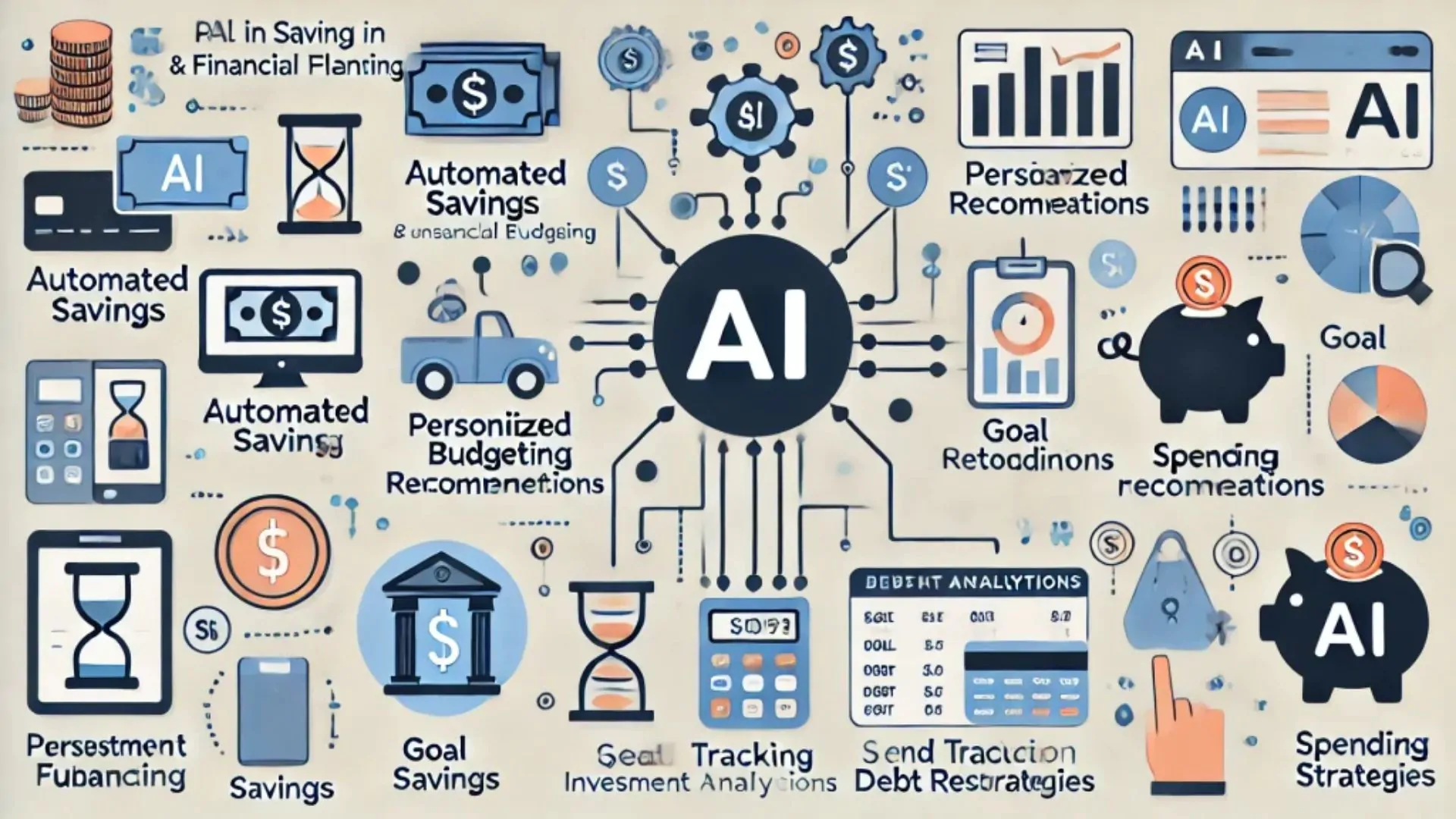💡 Introduction: The Easiest Way to Save (Without Thinking About It)
If you’ve ever tried to save money and failed, you’re not broken — your system is.
Most people plan to save whatever’s left after bills and spending, but here’s the truth: if you wait until the end of the month to save, nothing will be left.
The solution?
Automate your savings.
Automation is like hiring a personal finance assistant who transfers money for you — consistently, silently, and without needing your permission every time.
By the end of this post, you’ll see why automating your savings is the smartest financial move you can make, how to set it up, and how it transforms your financial life forever.
⚙️ What Does “Automating Your Savings” Mean?
Automating your savings simply means setting up automatic transfers from your checking account to your savings or investment account — at regular intervals (weekly, biweekly, or monthly).
Instead of manually deciding each month, your system does it for you.
| Manual Saving | Automated Saving |
|---|---|
| You decide each month | Happens automatically |
| Easy to forget | Never skipped |
| Depends on willpower | Runs on consistency |
| Stressful & irregular | Effortless & reliable |
💬 Automation turns good intentions into guaranteed results.
💰 Why Automating Your Savings Works So Powerfully
1️⃣ You Save Before You Spend
Most people save “what’s left” after spending — but automation flips the script.
By paying yourself first, you prioritize your future over short-term impulses.
💡 It’s like treating your savings as a bill you can’t skip.
2️⃣ It Builds Financial Discipline (Without Effort)
You don’t have to rely on motivation or memory.
Your bank or app does the work, building financial discipline on autopilot.
Even small amounts — like $25 a week — grow over time when done consistently.
3️⃣ It Removes Emotion from Money Decisions
Money habits often fail because emotions get in the way — “I’ll save later” or “I deserve a treat.”
Automation bypasses that debate entirely. Once it’s set, it’s done.
4️⃣ It Helps You Reach Goals Faster
Whether you’re saving for a house, emergency fund, or dream vacation — automation ensures steady progress.
You’ll hit milestones faster without constantly worrying about transfers.
5️⃣ It Reduces Financial Stress
There’s peace in knowing your savings are handled.
You stop thinking “I should be saving more” — because you already are.
🧠 Behavioral Science: Why Automation Wins
Psychologists call it “default bias” — we naturally stick with what’s automatic.
By setting your savings on autopilot, you remove the hardest part: starting.
Automation also taps into habit stacking — pairing saving with your paycheck so it becomes invisible and painless.
💬 If you don’t see the money, you won’t miss it.
🧾 How to Automate Your Savings (Step-by-Step Guide)
Step 1: Define Your Savings Goals
Decide why you’re saving.
- Emergency fund
- Vacation or wedding
- Down payment
- Retirement or investment fund
Specific goals keep you motivated and measurable.
Step 2: Choose Your Savings Vehicle
Decide where your money should go:
| Goal | Best Account Type |
|---|---|
| Emergency fund | High-yield savings account |
| Short-term goals | Regular savings account |
| Long-term goals | Investment account (ETF, IRA, etc.) |
Step 3: Automate Transfers
Log into your bank app or payroll system:
- Set automatic transfers for the day you get paid.
- Pick a frequency (weekly, biweekly, or monthly).
- Start small — even $20 per week adds up to over $1,000 yearly.
💡 Pro tip: Schedule transfers right after payday so you never “feel” the loss.
Step 4: Separate Your Savings
Keep savings out of sight and out of temptation.
Open a dedicated savings account or use a digital savings platform that doesn’t link directly to your debit card.
Automation works best when the money is slightly inconvenient to withdraw.
Step 5: Review Quarterly
Automation doesn’t mean neglect.
Check in every 3 months to adjust for:
- Income changes
- New goals
- Inflation or lifestyle shifts
This keeps your system aligned with your current reality.
🧩 Example: How $50/Week Becomes $13,000+
| Weekly Savings | Annual Total | 5-Year Growth (With 3% Interest) |
|---|---|---|
| $25 | $1,300 | $6,900 |
| $50 | $2,600 | $13,800 |
| $100 | $5,200 | $27,600 |
It’s not about how much you save — it’s about how consistently you save.
💼 Smart Tools to Automate Your Savings
| Tool/App | Purpose | Best For |
|---|---|---|
| Chime | Auto-saves percentage of income | Beginners |
| Qapital | Automates goal-based savings | Gamified saving |
| Digit (now Oportun) | Saves small amounts automatically | Passive savers |
| YNAB | Integrates savings with budget | Active planners |
| EliteEraTrends AI Planner | AI-based saving insights | Businesses & creators |
🧱 Combining Automation with a Zero-Based Budget
Automation becomes unstoppable when paired with the Zero-Based Budgeting method.
You assign every dollar a purpose — savings included — before spending begins.
👉 Read next: The Zero-Based Budget Guide: Stop Guessing and Take Control
This combo ensures every dollar either funds your life or builds your future — no waste.
🚫 Common Mistakes to Avoid When Automating Savings
- Automating too much too soon — start small to stay consistent.
- Forgetting to track goals — automation doesn’t replace awareness.
- Linking to spending accounts — temptation kills progress.
- Skipping reviews — revisit every few months.
- Relying on one account only — diversify goals across accounts.
🌱 The Compound Effect of Consistency
Automated savings thrive on compound growth.
The earlier you start, the longer your money works for you.
Imagine you start saving $200/month at 25 vs. 35:
- At 6% annual return, you’ll have $384,000 vs. $197,000 at age 65.
That’s nearly double — just by starting 10 years earlier.
💬 Automation isn’t just about saving time — it’s about buying freedom.
🧠 The Psychology of “Set It and Forget It”
Financial peace doesn’t come from earning more — it comes from removing decisions.
Automation eliminates friction, turning money management into a background process that quietly builds your net worth.
You’ll stop feeling guilty for “not saving enough” because your system does it automatically.
💡 Real-Life Example
Maya earns $3,000 monthly and sets up an automatic $200 transfer every payday.
At first, she barely notices.
A year later, she’s saved $4,800, built an emergency fund, and stopped relying on credit cards.
Her secret? She didn’t think about it — she automated it.
❓ FAQ: Automating Your Savings
1. Is automating savings really safe?
Yes. Most banks and fintech platforms use encrypted systems for secure transfers. Just verify your settings.
2. How much should I automate?
Start with 10% of your income, then increase gradually as your comfort grows.
3. What if I live paycheck to paycheck?
Even $10 weekly builds momentum — automation is about consistency, not amount.
4. Should I automate investing too?
Absolutely! Many platforms (like Vanguard, Fidelity, or Revolut) let you automate small recurring investments.
5. How often should I review my automated savings?
Quarterly reviews are enough — ensure goals and income still align.
✨ Final Thoughts
Automating your savings is more than a financial tactic — it’s a lifestyle upgrade.
You take the stress out of saving, the guilt out of spending, and the confusion out of managing money.
Set it up once, let it run forever — and watch your savings grow while you focus on living.
The smartest money move isn’t about effort — it’s about automation.
💡 Try our AI Automation agency here to make your company grow!
👉 💡 Try our AI Automation agency here to make your company grow!













Leave a Reply